- Home
- George R. R. Martin
Old Mars
Old Mars Read online
Old Mars is a work of fiction. Names, places, and incidents either are a product of the author’s imagination or are used fictitiously.
Copyright © 2013 by George R. R. Martin and Gardner Dozois
All rights reserved.
Published in the United States of America by Bantam Books, an imprint of the Random House Publishing Group, a division of Random House LLC, New York, a Penguin Random House Company.
BANTAM BOOKS and the rooster colophon is a registered trademark of Random House LLC.
LIBRARY OF CONGRESS CATALOGING-IN-PUBLICATION DATA
Old Mars / edited by George R. R. Martin and
Gardner Dozois.
pages cm
A new anthology of all original stories.
ISBN 978-0-345-53727-0
eBook ISBN 978-0-345-53859-8
1. Science fiction, American. 2. Short stories, American. 3. Science fiction, English. 4. Short stories, English. I. Martin, George R. R., editor of compilation.
II. Dozois, Gardner R., editor of compilation.
PS648.S3O43 2013
813′.087620806—dc23 2013001349
www.bantamdell.com
Jacket design: David Stevenson
Jacket illustrations: © Stephen Youll
v3.1
Contents
Cover
Title Page
Copyright
Introduction: Red Planet Blues
by George R. R. Martin
MARTIAN BLOOD
by Allen M. Steele
THE UGLY DUCKLING
by Matthew Hughes
THE WRECK OF THE MARS ADVENTURE
by David D. Levine
SWORDS OF ZAR-TU-KAN
by S. M. Stirling
SHOALS
by Mary Rosenblum
IN THE TOMBS OF THE MARTIAN KINGS
by Mike Resnick
OUT OF SCARLIGHT
by Liz Williams
THE DEAD SEA-BOTTOM SCROLLS
by Howard Waldrop
A MAN WITHOUT HONOR
by James S. A. Corey
WRITTEN IN DUST
by Melinda M. Snodgrass
THE LOST CANAL
by Michael Moorcock
THE SUNSTONE
by Phyllis Eisenstein
KING OF THE CHEAP ROMANCE
by Joe R. Lansdale
MARINER
by Chris Roberson
THE QUEEN OF THE NIGHT’S ARIA
by Ian McDonald
Dedication
Other Books by these Authors
About the Editors
Introduction
RED PLANET BLUES
BY GEORGE R. R. MARTIN
ONCE UPON A TIME THERE WAS A PLANET CALLED MARS, A world of red sands, canals, and endless adventure. I remember it well, for I went there often as a child.
Born and raised in Bayonne, New Jersey, I came from a blue-collar, working-class background. My family never had much money. We lived in a federal housing project, never owned a car, never went much of anywhere. The projects were on First Street, my school was on Fifth Street, a straight shot up Lord Avenue, and for most of my childhood those five blocks were my world.
It never mattered, though, for I had other worlds. A voracious reader, first of comic books (superheroes, mostly, but some Classics Illustrated and Disney stuff as well), then of paperbacks (science fiction, horror, and fantasy, with a seasoning of murder mysteries, adventure yarns, and historicals), I traveled far and wide while hunched down in my favorite chair, turning pages.
I soared among the skyscrapers of Metropolis with Superman, fought bad guys in Gotham City with Batman, swung between the water towers of Manhattan with Spider-Man. I sailed the South Seas with Long John Silver and Robert Louis Stevenson, and swam beneath them with Aquaman and Prince Namor the Submariner. Scrooge McDuck took me to Darkest Africa to search for King Solomon’s Mines, and H. Rider Haggard returned me there. I swashed and buckled and fought the Cardinal’s men with the Three Musketeers and Dumas Père, sang of the Green Hills of Earth with the blind singer Rhysling and Robert A. Heinlein, trekked across Big Planet with Jack Vance, sped through the Caves of Steel with Isaac Asimov, and dared the terrors of the Mines of Moria with J. R. R. Tolkien. Books became my passport to Arrakis and Trantor, Minas Tirith and Gormenghast, Oz and Shangri-La, all the lands of myth and fable …
… and to the planets, moons, and asteroids of our solar system as well. Frozen Pluto (still a planet!), where the sun was just a bright star in the sky. Titan, with Saturn and its rings looming overhead. Mercury, one face turned eternally toward the sun, where life could only survive in the “twilight zone” between day and night. Mighty Jupiter, whose fearsome gravity made its inhabitants stronger than a hundred men. Venus, hidden beneath its shroud of cloud, where web-footed natives (Venusians or Venerians, take your pick) hunted dinosaurs through fetid, steaming swamps.
And Mars.
Growing up, I think I went to Mars more often than I went to New York City, though Manhattan was only forty-five minutes and fifteen cents away by bus. We usually made a Christmas trip to New York, saw the holiday show at Radio City Music Hall, ate in the Horn & Hardart automat in Times Square. That was pretty much all I knew of New York City (yes, I knew of the Empire State Building and the Statue of Liberty, but never visited either one until the seventies, long after I had moved away from New Jersey).
Mars, though … I knew Mars inside and out. A desert planet, dry and cold and red (of course), it had seen a thousand civilizations rise and fall. The Martians that remained were a dwindling race, old and wise and mysterious, sometimes malignant, sometimes benevolent, always unknowable. Mars was a land of strange and savage beasts (thoats! Tharks! sandmice!), whispering winds, towering mountains, vast seas of red sand crisscrossed by dry canals, and crumbling porcelain cities where mystery and adventure lurked around every corner.
Mars has always had a certain fascination for us Earthlings. It was one of the original planets, the Fab Five of antiquity (along with Mercury, Venus, Jupiter, and Saturn), the “wanderers” who refused to march in step with the stars, but made their own way through the heavens. And Mars was red, its color visible even to the naked eyes of the ancients; the color of blood and fire. Small wonder the Romans named it after their god of war. Galileo’s observations of Mars through his telescope, Cassini’s revelation of the polar ice caps in 1666, and Asaph Hall’s discovery of the Martian moons Phobos and Deimos in 1877 only served to make the red planet even more appealing … but it was Italian astronomer Giovanni Schiaparelli’s announcement that he had observed “canali” on Mars that cinched the deal.
The name Schiaparelli gave the dark lines he saw on the Martian surface actually means “channels,” but when reported in English it was rendered as “canals.” Channels can be natural; canals are artificial. And 1877 was part of an era when man-made canals were very much in the public consciousness. The Erie Canal, completed in 1825, had played a key role in the westward expansion of America. The Suez Canal had opened in 1869, connecting the Mediterranean to the Indian Ocean. The French would begin work on the Panama Canal just a few years later, in 1881; the Americans would finish it in 1914.
Each had been a massive undertaking, a wonder of modern engineering, and if there were canals on Mars … well, surely there must be canal builders as well. Surely there must be Martians.
Small wonder then that when Herbert George Wells sat down a few years later to write a “scientific romance” of alien invasion called The War of the Worlds, he looked to the red planet for his invaders. “Across the gulf of space,” Wells wrote, “minds that are to our minds as ours are to those of the beasts that perish, intellects vast and cool and unsympathetic, regarded this earth with envious eyes, and slowly and surely
drew their plans against us.”
Schiaparelli’s observations had awakened the interest of scientists as well as novelists. In particular, they had excited the interest of the American astronomer Percival Lowell. Lowell’s new observatory in Flagstaff, Arizona, boasted larger telescopes than Schiaparelli’s in Milan, and had less light pollution to contend with as well. Powell trained those telescopes on Mars … and saw, not “channels,” but canals.
Mars became Lowell’s passion. For the rest of his life he studied the red planet extensively, finding more every time he looked, drawing extensive, intricate, and detailed maps of the Martian surface, complete with canals, double canals, oases. He published his findings and theories in three enormously popular and influential books: Mars (1896), Mars and Its Canals (1906), and Mars as the Abode of Life (1908), promulgating the theory that the canals, long and straight and obviously artificial, had been built by a Martian race to carry water from the polar ice caps to the vast deserts of their arid planet.
Other astronomers turned their telescopes on Mars as well. Some of them saw Lowell’s canals, confirming his findings at least in part. Others saw only Schiaparelli’s channels, and put them down as natural features. Some saw nothing at all and insisted all these canals were optical illusions. By and large, the astronomical community remained skeptical of Lowell and his observations … but the idea of Martian canals, and the Martian civilization it suggested, had taken firm root in the public consciousness.
Especially in the minds of the storytellers.
H. G. Wells had given the world Martians, but he himself never took us to Mars. That task he left to a (much lesser) writer named Garrett P. Serviss, who published a sort of sequel to War of the Worlds called Edison’s Conquest of Mars in 1898. Though largely (and deservedly) forgotten today, the Serviss novel was widely read and influential in its day, and was the first to carry the reader across the gulf of space to the red planet, with its two moons, windswept deserts, and Schiaparellian canals. But it was a later writer who truly brought that landscape to life, and established the template that would inspire generations of science-fiction writers to come, and thrill and delight thousands upon thousands of readers like myself.
“Normal Bean,” he named himself when he sent his story off to the editors at The All-Story magazine in 1911. Someone thought that was a typo (it wasn’t), and “Under the Moons of Mars” was bylined “Norman Bean” when it began its serial run in February 1912. The writer behind the pseudonym was Edgar Rice Burroughs. The serial would be retitled A Princess of Mars when its installments were collected together and republished in book form in 1917. Under that title, it would remain in print for the better part of a century, and give birth to numerous sequels, spin-offs, and imitations.
Barsoom was the name that ERB’s Martians (green and red both) gave their dying desert planet. Burroughs took Lowell’s notions and ran with them, filling up the red planet with Tharks and thoats and flying boats, with radium rifles and white apes and atmosphere plants, with daring swordsmen and egg-laying princesses clad only in jewels. Though never a great writer, ERB was a master storyteller, and in John Carter and Dejah Thoris he created two characters that generations of readers would come to love and cherish, their popularity eclipsed only by that of his other creation, the jungle lord called Tarzan. Ten more Barsoom novels would follow over the next half century, some featuring John Carter, some other characters … but the world that Burroughs had created, his Mars, with all its lands and peoples, would remain the true star of the series, from the first to the last.
Barsoom was his, and his alone. But Percival Lowell’s books and theories were out there for all to read, and Otis Adelbert Kline, Stanley G. Weinbaum, C. S. Lewis, Jack Williamson, Edmond Hamilton, and myriad other writers soon joined in with their own takes on Mars and its inhabitants. Though E. E. “Doc” Smith had taken science fiction to the stars with The Skylark of Space in 1928, only a few of his fellow scribes ever followed him there. From the twenties to the sixties, most SF writers preferred to remain closer to home, in a solar system teeming with life, where every planet, moon, and asteroid was more exotic than the next.
How many tales were set on Mars during the heyday of the science-fiction pulps? Hundreds, surely. Thousands, probably. Tens of thousands? Maybe. More tales than I can possibly list? Certainly. Most forgettable and forgotten, to be sure, but every tale, even the least and worst of them, helped to make the red planet a little more familiar, a little more real. The Mars of my childhood was not the invention of H. G. Wells or Percival Lowell or even Edgar Rice Burroughs, as important and influential as they were, but rather an amalgam created by many different writers, each adding their own touches and twists over the years and decades to create a kind of consensus setting, a world that belonged to everyone and no one.
That was my Mars. As it happens, I never read the Burroughs novels when I was a kid (I came to them much much later, when I was in my forties, about three decades too late), but I knew and loved the works that ERB’s Barsoom had inspired. My first visits to Mars were in the company of Tom Corbett, Astro, and Roger Manning, the crew of the Polaris in the classic series of juvenile (today we would call them YA) space operas derived from Robert A. Heinlein’s Space Cadet by way of the television series Tom Corbett, Space Cadet. Heinlein himself took me back to a somewhat different Mars in another of his Scribners’ juveniles, Red Planet. I learned about ferocious Martian sandmice from Andre Norton and her doppelgänger Andrew North. In the drytowns, I faced “Shambleau” with C. L. Moore and Northwest Smith. Then came Leigh Brackett and Erik John Stark, another of the great space-opera heroes. Later, a little older, I encountered The Martian Chronicles, and a very different take on Old Mars from the pen of Ray Bradbury, elegiac rather than adventurous, but just as magical, just as memorable.
Roger Zelazny’s haunting, poetic “A Rose for Ecclesiastes” was probably the last great story of The Mars That Was. First published in the November 1963 issue of The Magazine of Fantasy & Science Fiction, the Zelazny story became an instant classic. (Zelazny also wrote the last great story of Old Venus, the Nebula Award–winning “The Doors of His Face, the Lamps of His Mouth.”)
By the time I encountered the works of Bradbury and Zelazny, I was already writing stories of my own. My first efforts were prose superhero stories for the comic-book fanzines of the sixties, but I soon moved on to sword-and-sorcery tales and mysteries and SF, and started dreaming about making a career as a writer. One day, I expected, I would be writing my own Mars stories.
It was not to be. For even as Zelazny was penning his tales of Old Mars and Old Venus, the space race was heating up. I watched every manned launch on our old black-and-white television in our apartment in the projects, certain that I was seeing the dawn of a new age, where all the dreams of science fiction would come true. First came Sputnik, Vanguard, Explorer. Then Mercury, Gemini, Apollo.
Yury Gagarin, Alan Shepard, John Glenn.
And Mariner … oh, Mariner …
It was Mariner that put an end to the glory days of Old Mars … and to its sister planet, Old Venus, wet and watery, with its drowned cities, endless swamps, and web-footed Venusians. Mariner 2 (launched August 1962) was the first successful planetary flyby, reaching Venus after three and a half months of spaceflight. Mariner 4 (November 1964) did the same honors for Mars. Mariner 5 (June 1967) was another Venus probe. Mariner 6 (launched February 1969) and Mariner 7 (launched March 1969) were a Martian double-team. Mariner 8 was lost, but its sister Mariner 9 (May 1971) entered Martian orbit in November of that year, joining Phobos and Deimos to become a third Martian moon, the first artificial satellite of the red planet. Mariner 10, the last of the series, cruised by not only Venus, but Mercury as well … demonstrating that the innermost planet did not, in fact, keep one face perpetually turned toward the sun, as had been previously believed.
And all of that would have been tremendously exciting, only …
The Mars that NASA discovered was not the Mars o
f Percival Lowell and Edgar Rice Burroughs, of Leigh Brackett and C. L. Moore. The Mariner probes found no trace of cities, living, dead, or dying. No Tharks, no thoats, no Martians of any hue or color. Lowell’s network of artificial canals was not in evidence, and neither was Schiaparelli’s “channels.” Instead, there were craters; the real Mars resembled Luna much more than it did Barsoom. And Venus … beneath those clouds, instead of swamps and dinosaurs and web-footed Venerians, Venus was a toxic hell, volcanic, sulfuric, far too hot for humans to survive.
Mariner’s findings thrilled scientists around the world and gave us a detailed and accurate picture of the nature of the inner planets, but for the readers and writers of science fiction like me, the excitement was mingled with disillusionment and dismay. This was not the Mars we wanted. This was not the Venus of our dreams.
I never wrote that Mars story. Nor any stories on Venus, or Mercury, or any of the worlds of the “lost” solar system of my youth, the worlds that had provided the setting for so many wonderful tales during the thirties, forties, and fifties. In that I was not alone. After Mariner, our genre moved to the stars in a big way, searching for the colorful exotic settings and alien races that could no longer be found here “at home.”
Science fiction did not entirely abandon Mars as a subject after the Mariner probes. The occasional story and novel continued to be written. But these new tales were set upon the “new Mars,” the real Mars, Mariner’s Mars … where canals, dead cities, sandmice, and Martians were conspicuously absent. Kim Stanley Robinson’s award-winning trilogy about the colonization and terraforming of the fourth planet—Red Mars, Green Mars, and Blue Mars—was the most ambitious and memorable of those, and a worthy effort it was.
Overall, though, the number of science-fiction stories set on Mars and its sister planets declined sharply after Mariner, for understandable reasons. The real Mars was simply not as interesting as its pulp predecessor. Airless, lifeless, dead, the planet the Mariner probes showed us could not plausibly support either the swashbuckling interplanetary romances of Burroughs, Brackett, and Moore, nor the evocative, elegiac fables of Bradbury and Zelazny. Post-Mariner, when we talked about the possibility of life on Mars, we were talking about microbes or maybe lichen (though even lichen seemed to be pushing it), not sandmice and thoats. And while the discovery of Martian life would no doubt be electrifying to biologists and space scientists around the world, there’s never been a microbe with the appeal of Dejah Thoris.

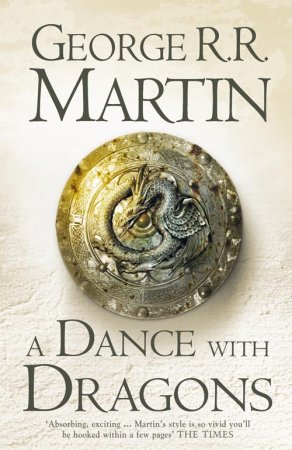 A Dance with Dragons
A Dance with Dragons A Storm of Swords
A Storm of Swords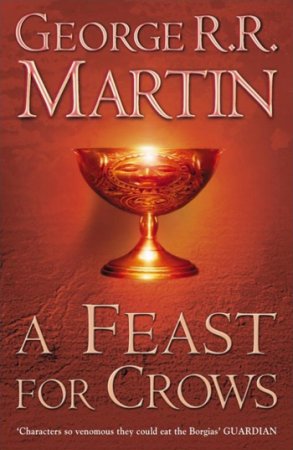 A Feast for Crows
A Feast for Crows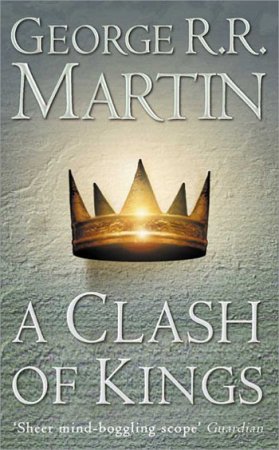 A Clash of Kings
A Clash of Kings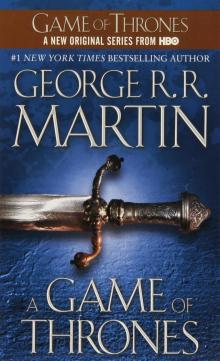 A Game of Thrones
A Game of Thrones Mississippi Roll
Mississippi Roll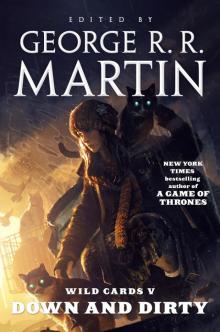 Wild Cards V: Down and Dirty
Wild Cards V: Down and Dirty Busted Flush
Busted Flush When the Devil Drives
When the Devil Drives Dying of the Light
Dying of the Light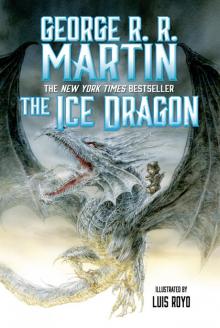 The Ice Dragon
The Ice Dragon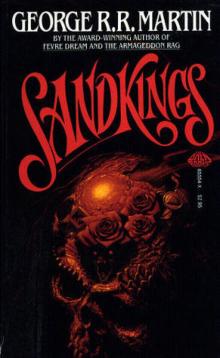 Sandkings
Sandkings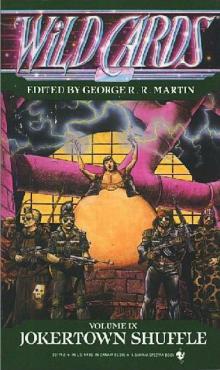 Jokertown Shuffle
Jokertown Shuffle Dreamsongs. Volume II
Dreamsongs. Volume II Deuces Down
Deuces Down When We Were Heroes
When We Were Heroes Warriors
Warriors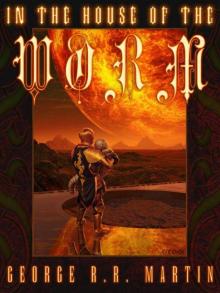 In the House of the Worm
In the House of the Worm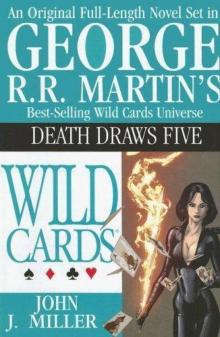 Death Draws Five
Death Draws Five Dreamsongs. Volume I
Dreamsongs. Volume I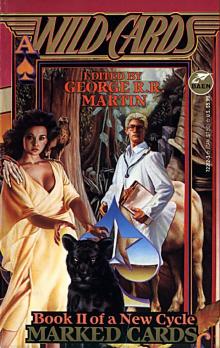 Marked Cards
Marked Cards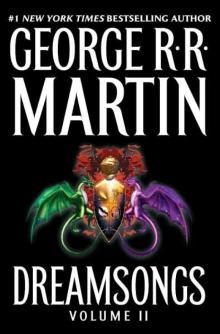 Dreamsongs
Dreamsongs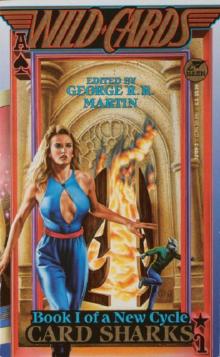 Card Sharks
Card Sharks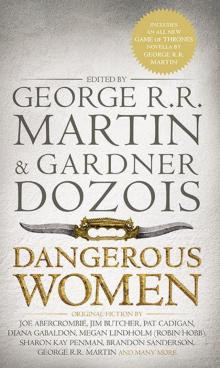 Dangerous Women
Dangerous Women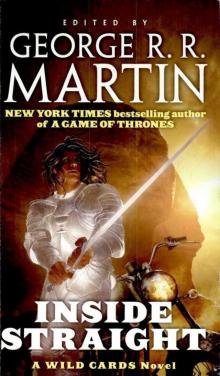 Inside Straight
Inside Straight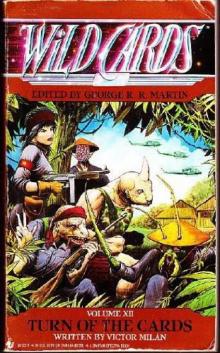 Turn of the Cards
Turn of the Cards Fevre Dream
Fevre Dream High Stakes: A Wild Cards Novel
High Stakes: A Wild Cards Novel Windhaven
Windhaven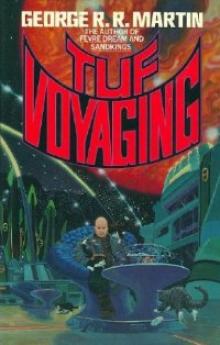 Tuf Voyaging
Tuf Voyaging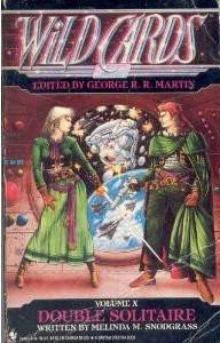 Double Solitaire
Double Solitaire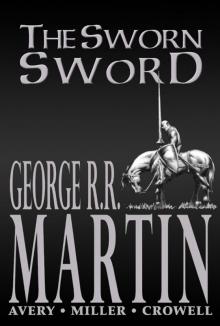 The Sworn Sword
The Sworn Sword Low Chicago
Low Chicago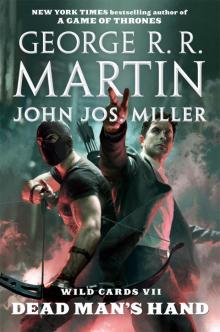 Dead Man's Hand
Dead Man's Hand Wild Cards
Wild Cards Black Trump
Black Trump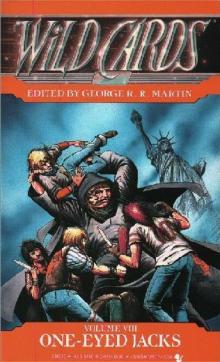 One Eyed Jacks
One Eyed Jacks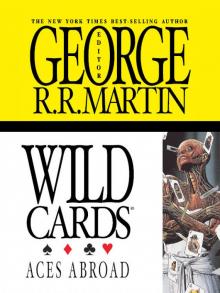 Wild Cards: Aces Abroad
Wild Cards: Aces Abroad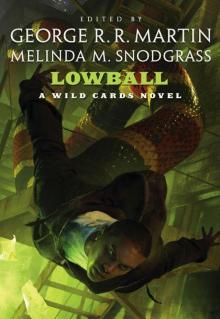 Lowball: A Wild Cards Novel
Lowball: A Wild Cards Novel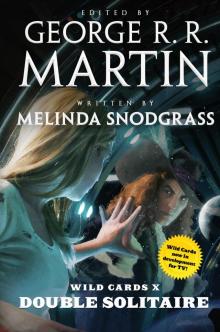 Double Solitaire (2019 Edition)
Double Solitaire (2019 Edition)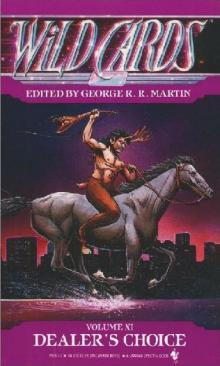 Dealer's Choice
Dealer's Choice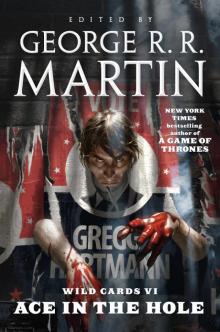 Ace in the Hole
Ace in the Hole A Song for Lya: And Other Stories
A Song for Lya: And Other Stories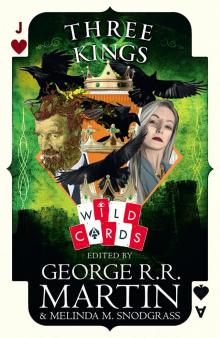 Three Kings
Three Kings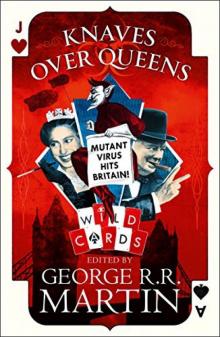 Knaves Over Queens
Knaves Over Queens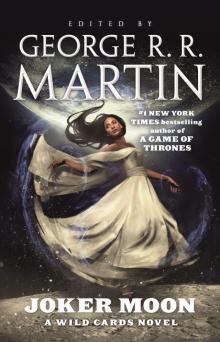 Joker Moon
Joker Moon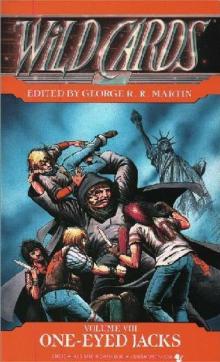 One Eyed Jacks wc-8
One Eyed Jacks wc-8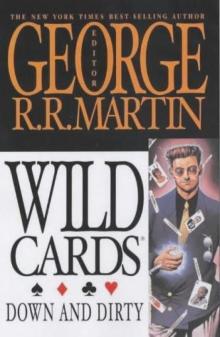 Down And Dirty wc-5
Down And Dirty wc-5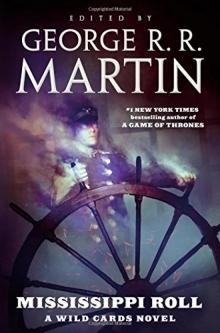 Mississippi Roll_A Wild Cards Novel
Mississippi Roll_A Wild Cards Novel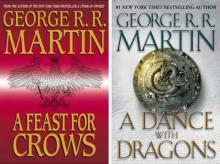 A Feast for Dragons
A Feast for Dragons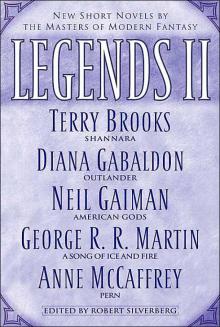 The Sworn Sword ttodae-2
The Sworn Sword ttodae-2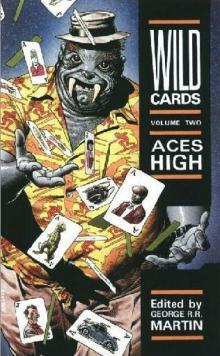 Aces High wc-2
Aces High wc-2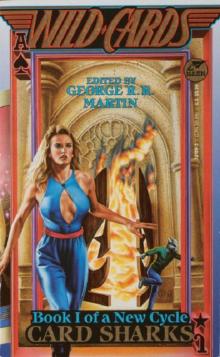 Wild Cards 13 : Card Sharks
Wild Cards 13 : Card Sharks Way of the Wizard
Way of the Wizard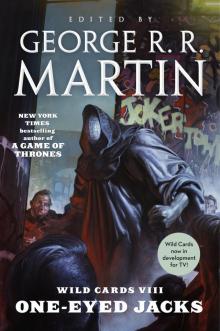 Wild Cards VIII: One-Eyed Jacks
Wild Cards VIII: One-Eyed Jacks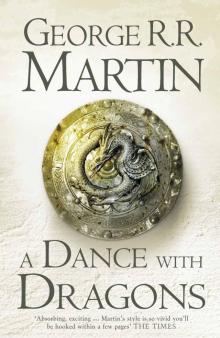 A Dance With Dragons: Book 5 of A Song of Ice and Fire (Song of Ice & Fire 5)
A Dance With Dragons: Book 5 of A Song of Ice and Fire (Song of Ice & Fire 5) The Princess and The Queen, Or, The Blacks and The Greens (a song of ice and fire)
The Princess and The Queen, Or, The Blacks and The Greens (a song of ice and fire) Wild Cards VI--Ace in the Hole
Wild Cards VI--Ace in the Hole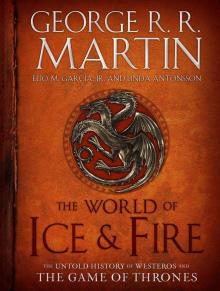 The World of Ice & Fire: The Untold History of Westeros and the Game of Thrones (A Song of Ice and Fire)
The World of Ice & Fire: The Untold History of Westeros and the Game of Thrones (A Song of Ice and Fire)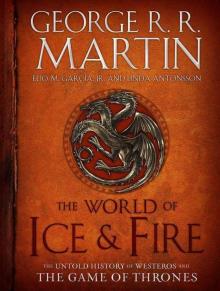 The World of Ice & Fire: The Untold History of Westeros and the Game of Thrones
The World of Ice & Fire: The Untold History of Westeros and the Game of Thrones Busted Flush wc-19
Busted Flush wc-19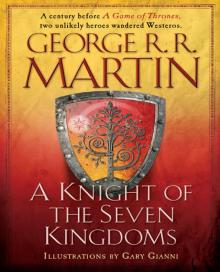 A Knight of the Seven Kingdoms
A Knight of the Seven Kingdoms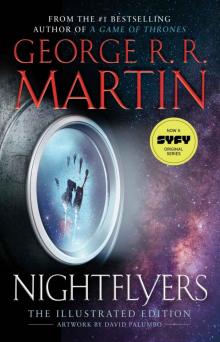 Nightflyers: The Illustrated Edition
Nightflyers: The Illustrated Edition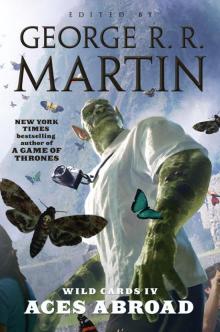 Wild Cards IV
Wild Cards IV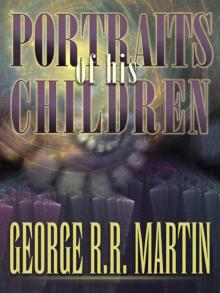 Portraits of His Children
Portraits of His Children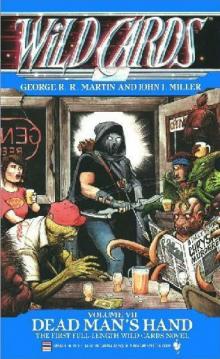 Dead Mans Hand wc-7
Dead Mans Hand wc-7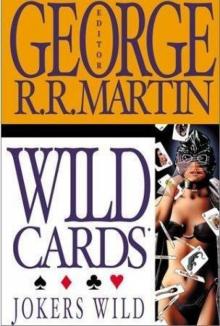 Jokers Wild wc-3
Jokers Wild wc-3 The Lonely Songs of Laren Dorr
The Lonely Songs of Laren Dorr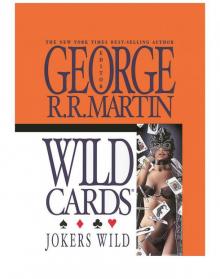 Wild Cards III: Jokers Wild
Wild Cards III: Jokers Wild A Game of Thrones Enhanced Edition
A Game of Thrones Enhanced Edition Nightflyers & Other Stories
Nightflyers & Other Stories Armageddon Rag
Armageddon Rag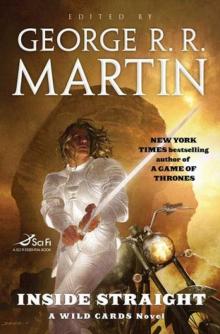 Wild Cards: Inside Straight
Wild Cards: Inside Straight A Song for Lya
A Song for Lya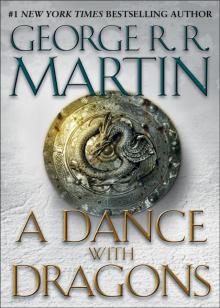 A Dance with Dragons: A Song of Ice and Fire: Book Five
A Dance with Dragons: A Song of Ice and Fire: Book Five Song of Fire & Ice 01 - A Game of Thrones
Song of Fire & Ice 01 - A Game of Thrones Death Draws Five wc-17
Death Draws Five wc-17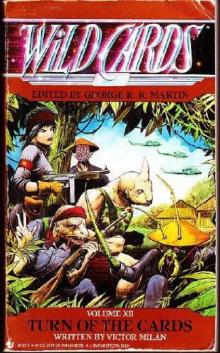 Turn of the Cards w-12
Turn of the Cards w-12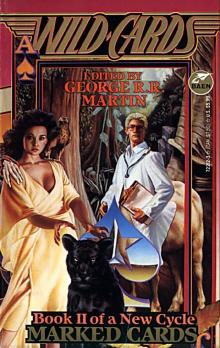 Wild Cards 14 - Marked Cards
Wild Cards 14 - Marked Cards Hunter's Run
Hunter's Run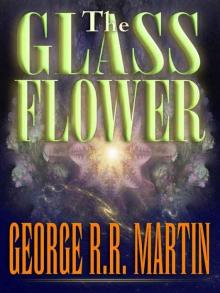 The Glass Flower
The Glass Flower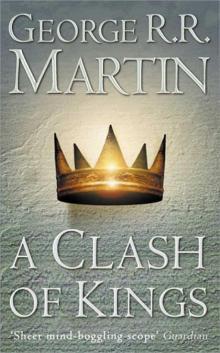 A Clash of Kings asoiaf-2
A Clash of Kings asoiaf-2 A Game of Thrones 5-Book Bundle: A Song of Ice and Fire Series: A Game of Thrones, A Clash of Kings, A Storm of Swords, A Feast for Crows, and A Dance with Dragons (Song of Ice & Fire)
A Game of Thrones 5-Book Bundle: A Song of Ice and Fire Series: A Game of Thrones, A Clash of Kings, A Storm of Swords, A Feast for Crows, and A Dance with Dragons (Song of Ice & Fire) Ace In The Hole wc-6
Ace In The Hole wc-6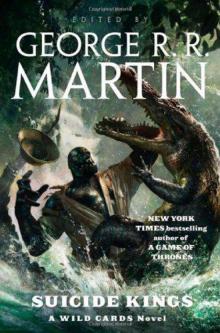 Suicide Kings wc-20
Suicide Kings wc-20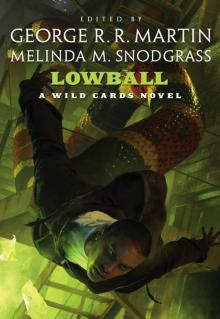 Lowball
Lowball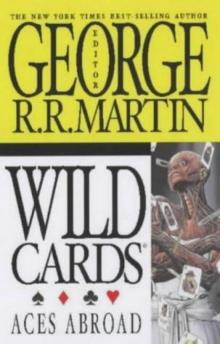 Aces Abroad wc-4
Aces Abroad wc-4 George R. R. Martin's a Game of Thrones 4-Book Bundle
George R. R. Martin's a Game of Thrones 4-Book Bundle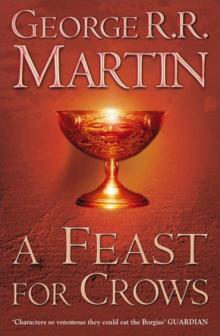 A Feast for Crows asoiaf-4
A Feast for Crows asoiaf-4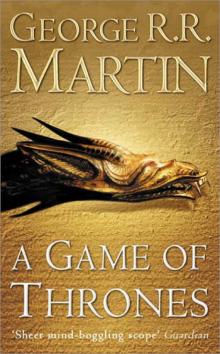 A Game of Thrones asoiaf-1
A Game of Thrones asoiaf-1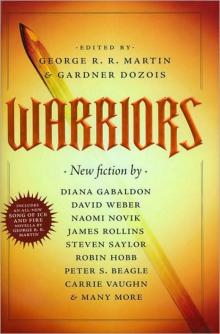 The Mystery Knight ttodae-3
The Mystery Knight ttodae-3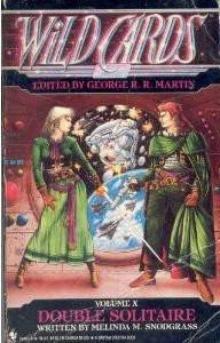 Double Solitaire w-10
Double Solitaire w-10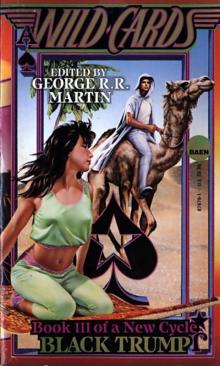 Wild Cards 15 - Black Trump
Wild Cards 15 - Black Trump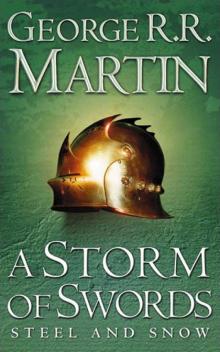 A Storm of Swords asoiaf-3
A Storm of Swords asoiaf-3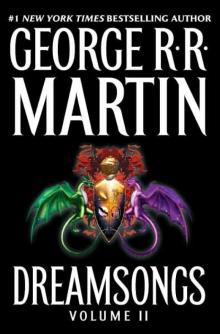 The Hedge Knight ttodae-1
The Hedge Knight ttodae-1 Dreamsongs 2-Book Bundle
Dreamsongs 2-Book Bundle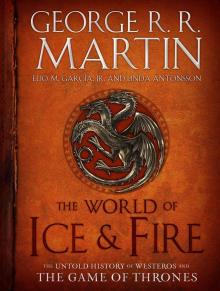 The World of Ice & Fire
The World of Ice & Fire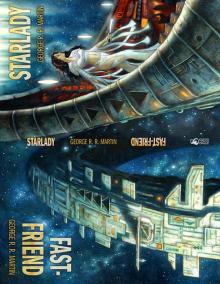 Starlady & Fast-Friend
Starlady & Fast-Friend Old Mars
Old Mars Fantasy For Good: A Charitable Anthology
Fantasy For Good: A Charitable Anthology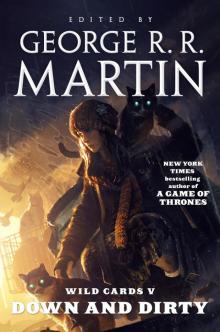 Wild Cards V
Wild Cards V A Dance with Dragons asoiaf-5
A Dance with Dragons asoiaf-5 Dealer's Choice w-11
Dealer's Choice w-11 The Book of Magic
The Book of Magic A Game of Thrones 4-Book Bundle
A Game of Thrones 4-Book Bundle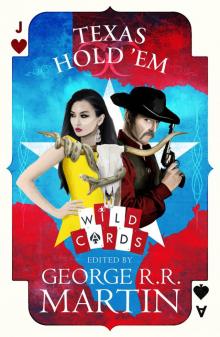 Texas Hold 'Em
Texas Hold 'Em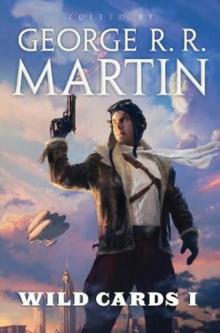 Wildcards wc-1
Wildcards wc-1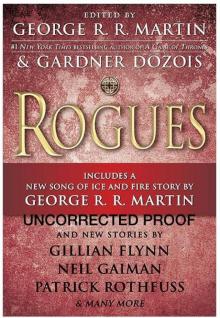 Rogues
Rogues Old Venus
Old Venus